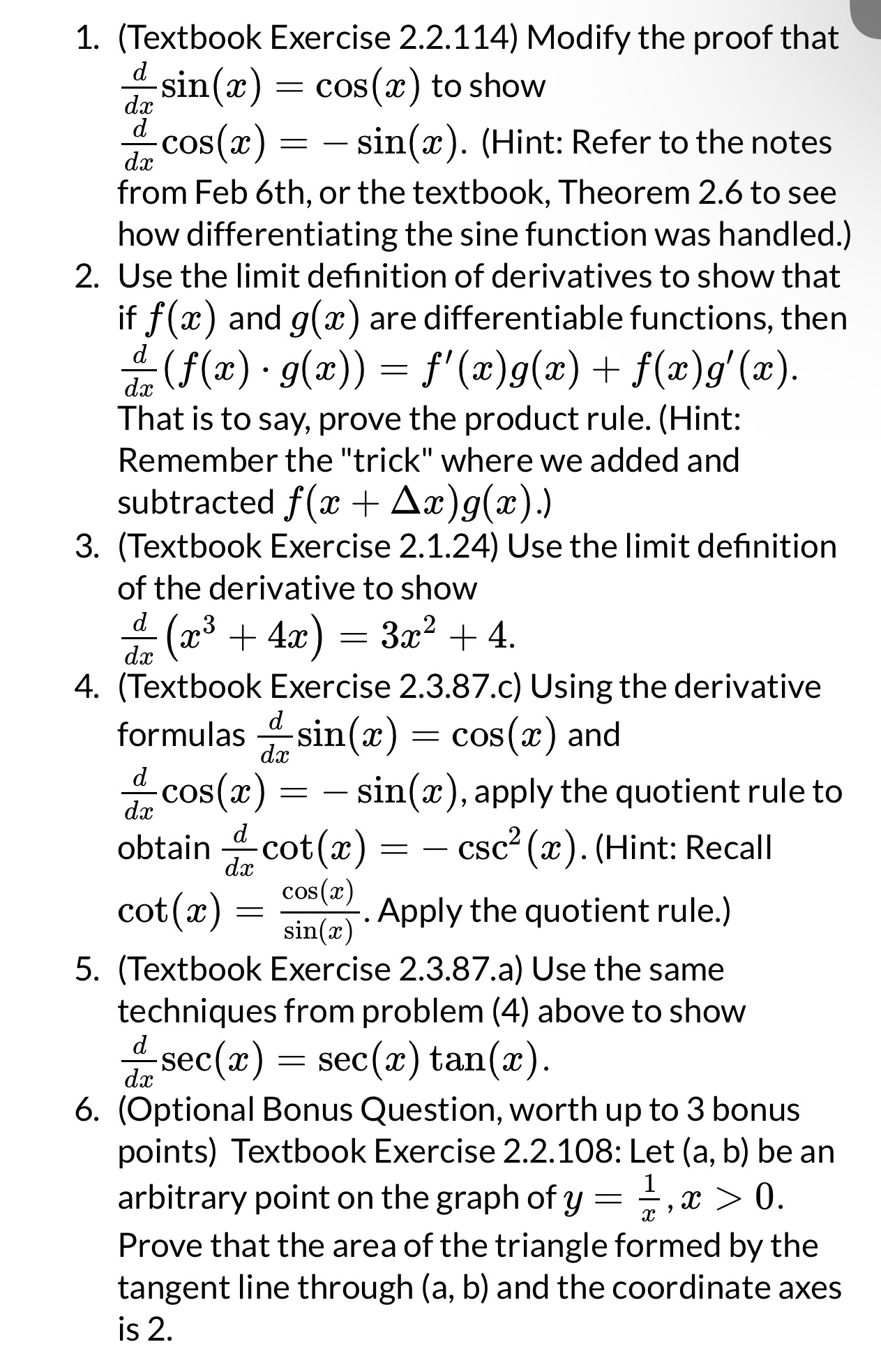Answered step by step
Verified Expert Solution
Question
1 Approved Answer
1. (Textbook Exercise 2.2.114) Modify the proof that d sin(x) = cos(x) to show dx d -cos(x) = sin(x). (Hint: Refer to the notes

1. (Textbook Exercise 2.2.114) Modify the proof that d sin(x) = cos(x) to show dx d -cos(x) = sin(x). (Hint: Refer to the notes dx - from Feb 6th, or the textbook, Theorem 2.6 to see how differentiating the sine function was handled.) 2. Use the limit definition of derivatives to show that if f(x) and g(x) are differentiable functions, then d(f(x) g(x)) = f'(x)g(x) + f(x)g'(x). That is to say, prove the product rule. (Hint: Remember the "trick" where we added and subtracted f(x + Ax)g(x).) 3. (Textbook Exercise 2.1.24) Use the limit definition of the derivative to show d 3 (x + 4x) = 3x + 4. dx 4. (Textbook Exercise 2.3.87.c) Using the derivative d formulas sin(x) = cos(x) and dx d cos(x) = - sin(x), apply the quotient rule to dx d dx obtain cot(x) = - csc (x). (Hint: Recall cos(x) cot (x) = Apply the quotient rule.) sin(x) 5. (Textbook Exercise 2.3.87.a) Use the same techniques from problem (4) above to show. sec(x) = sec(x) tan(x). d dx 6. (Optional Bonus Question, worth up to 3 bonus points) Textbook Exercise 2.2.108: Let (a, b) be an arbitrary point on the graph of y = 11, x > 0. Prove that the area of the triangle formed by the tangent line through (a, b) and the coordinate axes is 2.
Step by Step Solution
There are 3 Steps involved in it
Step: 1

Get Instant Access to Expert-Tailored Solutions
See step-by-step solutions with expert insights and AI powered tools for academic success
Step: 2

Step: 3

Ace Your Homework with AI
Get the answers you need in no time with our AI-driven, step-by-step assistance
Get Started


